It is just after sunrise, and Taipei is beginning to emerge from its slumber. Slowly, the streets fill up with people on their way to work or school.
"Flowers for sale. Magnolia blossoms. Ten dollars, ten dollars..!"
The cry comes from a middle-aged woman carrying the sweet-scented blooms arranged in a bamboo basket covered with taro leaves. A group of elderly women approaches. One of their number buys a cluster of four blossoms for NT$10 (US$0.25) and divides them up among her friends. As they walk away with the blossoms firmly placed in their hair, they leave behind a lingering fragrance.
Summer is the peak season for magnolia blossoms. The vendors can be seen everywhere dodging traffic to approach drivers stopped at lights. The pedestrian underpasses in front of the Taipei railway station are particularly good areas for sales. The cool and sweet fragrance of magnolia blossoms helps to dissipate the oppressive heat of the summer. Taxi-drivers like to hang them from their rear-view mirrors so that the fragrance circulates inside. Children put them in their pencil boxes. The magnolia blossoms truly add to everyone's enjoyment.
Traditionally, women have used the magnolia blossom to express their feelings when they worship the Buddha. The aromas of incense and the magnolia carry the faithful wishes up to the Buddha, the ancestors, and the other spirits.
Besides using the blossoms for worship, women in the past used to put them in their hair to act as a perfume after a hot day working in the fields.
At that time magnolia blossoms were very rarely seen for sale outside market places or temples. One reason was that only the rich could afford to spend money on flowers. Another was many people planted magnolias around their houses, and when they bloomed, they would distribute them among family, friends, and neighbors. It was a small way to express the warm feelings people felt for each other in an agricultural society. As society was industrialized and urbanized the custom died out. Recently, however, the street vendors have made the flower once again a part of everyday life. As the population has increased, so too has the market. In Taipei, everyone has seen a magnolia blossom, but few have seen a magnolia tree, or know where it grows. A vendor might explain: "In Sanchia there is a hundred year old tree and in the past almost all of Taipei's magnolia blossoms came from there. Three generations of the Lin family could rely on it for sustenance, and never go hungry." But this old tree aside, most of the magnolias in Taipei come from the central and southern parts of the island.
The flowers are picked all night long for shipment to Taipei, then at dawn in front of the Highway Department Office, a small market opens to distribute them. Basket after basket is unloaded. Most of the buyers are middle-aged women, who take away about a pound of the flowers every day. After selecting and buying the flowers, the vendors string them together in clusters and arrange them in bamboo baskets. By the time the residents of Taipei begin their daily trips to work and school, the vendors are to be found on every street corner and in every lane in the city.
The Chinese love the simplicity and grace of the blossoms, which remind them of the former life in an agricultural society. Farmers and flower vendors are grateful to the magnolia blossoms for providing them with livelihood in today's industrial age.
[Picture Caption]
1) The hundred year old magnolia tree in Sanchia, beautifully twisted and gnarled, is the oldest magnolia in the country. 2) A white magnolia blossom hung from a red blouse adds a lovely touch, it is also a natural perfume. They are appreciated by many young women. 3) The white blossom hidden behind the deep green leaves is like a gentle, shy young lady. 4) The magnolia trees are broad and tall, so every year a bamboo scaffold must be erected in order to enable the blossoms to be picked.
1) In Free China life is stable and people are more and more concerned with the quality of their lives, flower sellers have increased accordingly and the selling of magnolia blossoms at street corners has already become a common scene in Taipei. 2) Taxi drivers have found magnolia blossoms to be one way to help beat the heat during the hot summers. 3) It is very common to see women selling the blossoms in front of Buddhist temples. 4) Traditionally Chinese women would put several clusters of magnolia blossoms in a dish on the altar, this was considered the most sincere and the purest offering. 5) A blossom in the hair of an old woman makes one think of the beauty of the past. 6) Women making an offering of flowers to the Buddha; according to older people, the faithful seek beauty, a good marriage, and fine children.
1.2) Children put magnolia blossoms in their pencil boxes and hang them from their school bags, the pure fragrance trails after them.
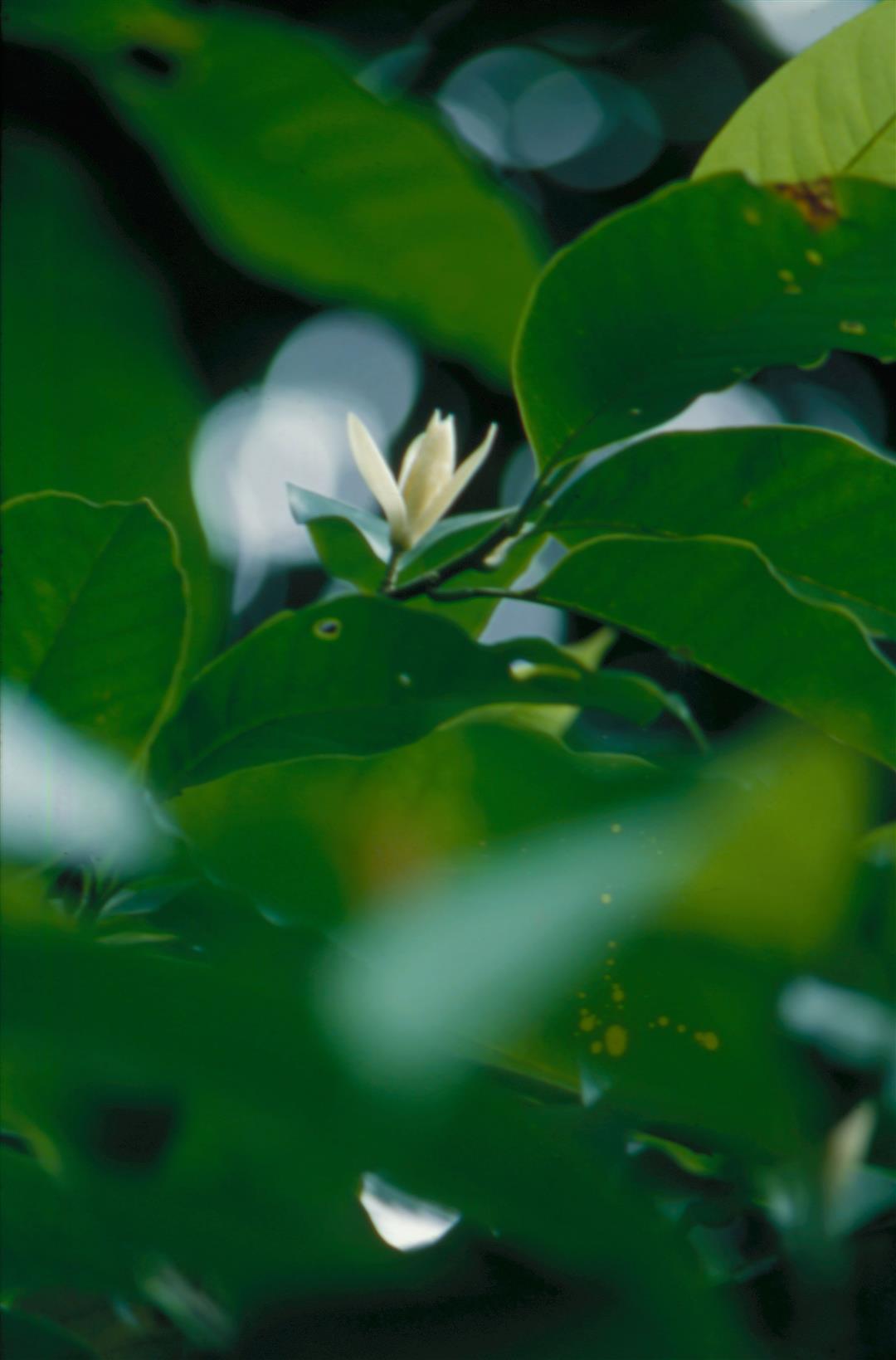
The white blossom hidden behind the deep green leaves is like a gentle, shy young lady.

The magnolia trees are broad and tall, so every year a bamboo scaffold must be erected in order to enable the blossoms to be picked.
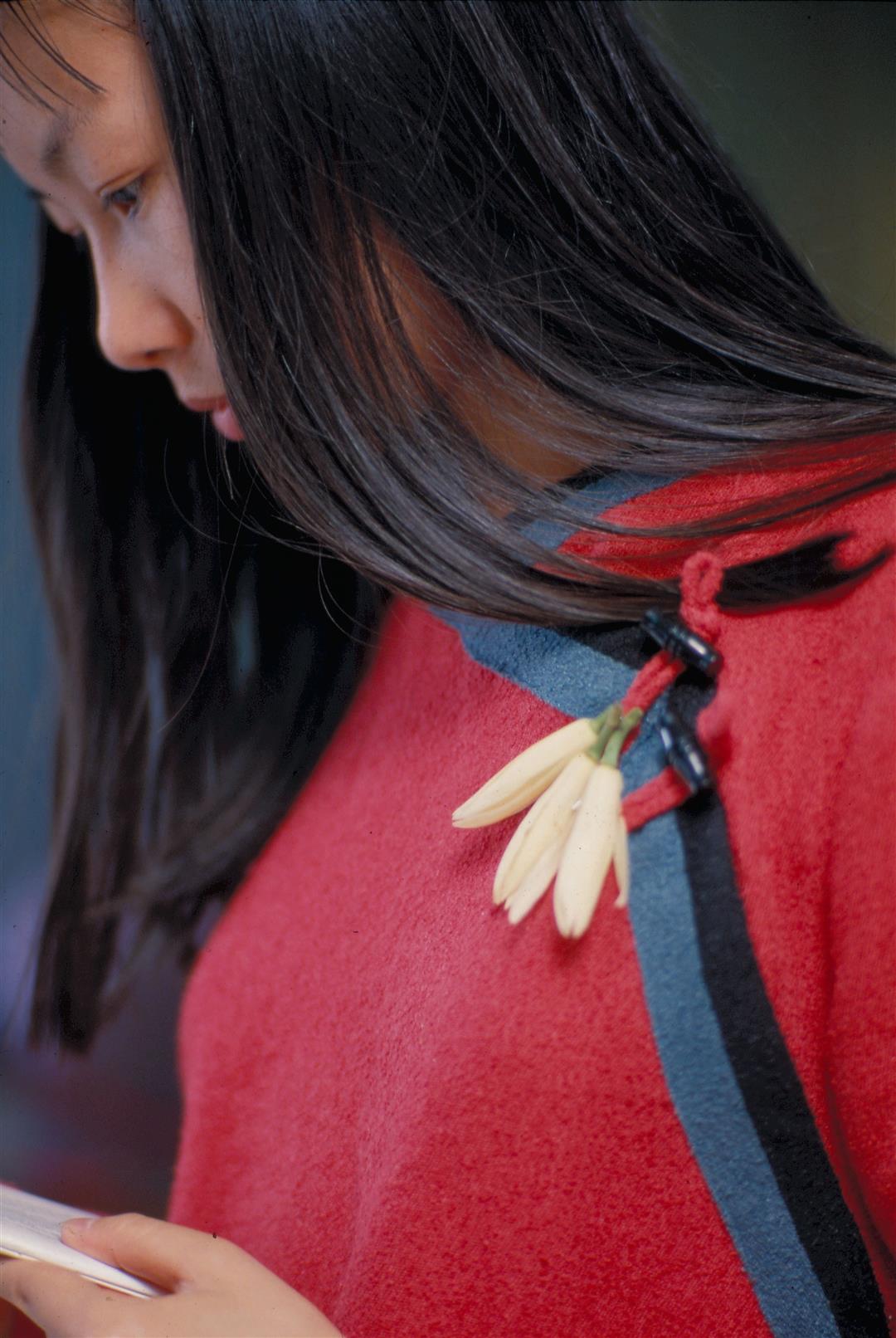
A white magnolia blossom hung from a red blouse adds a lovely touch, it is also a natural perfume. They are appreciated by many young women.
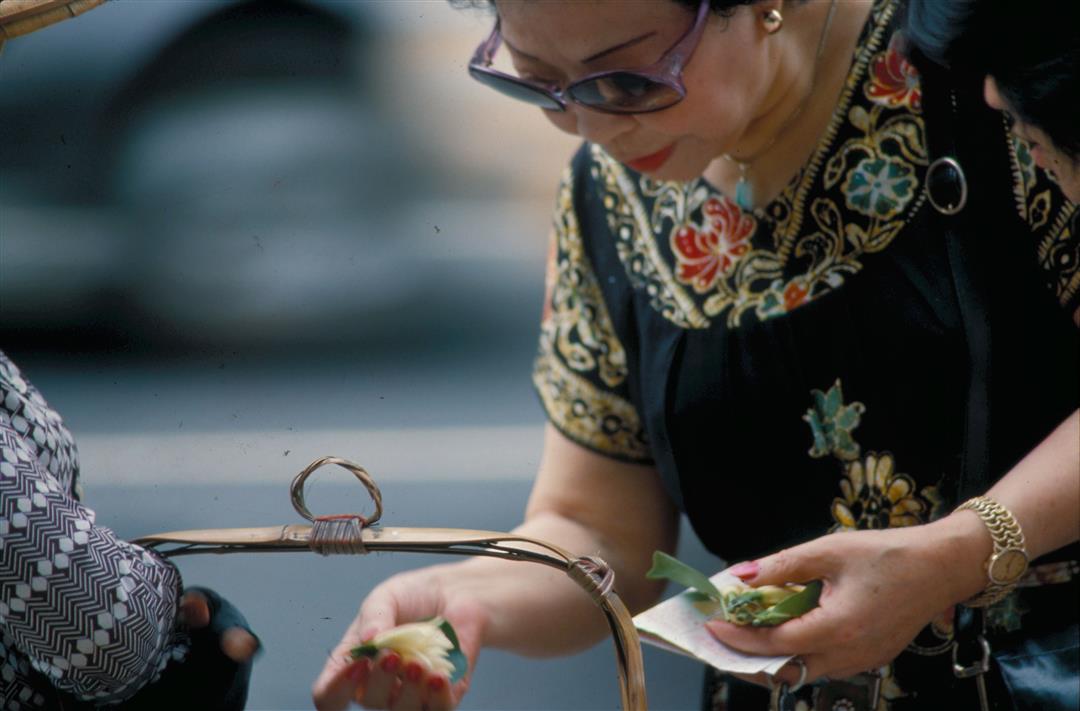
It is very common to see women selling the blossoms in front of Buddhist temples.
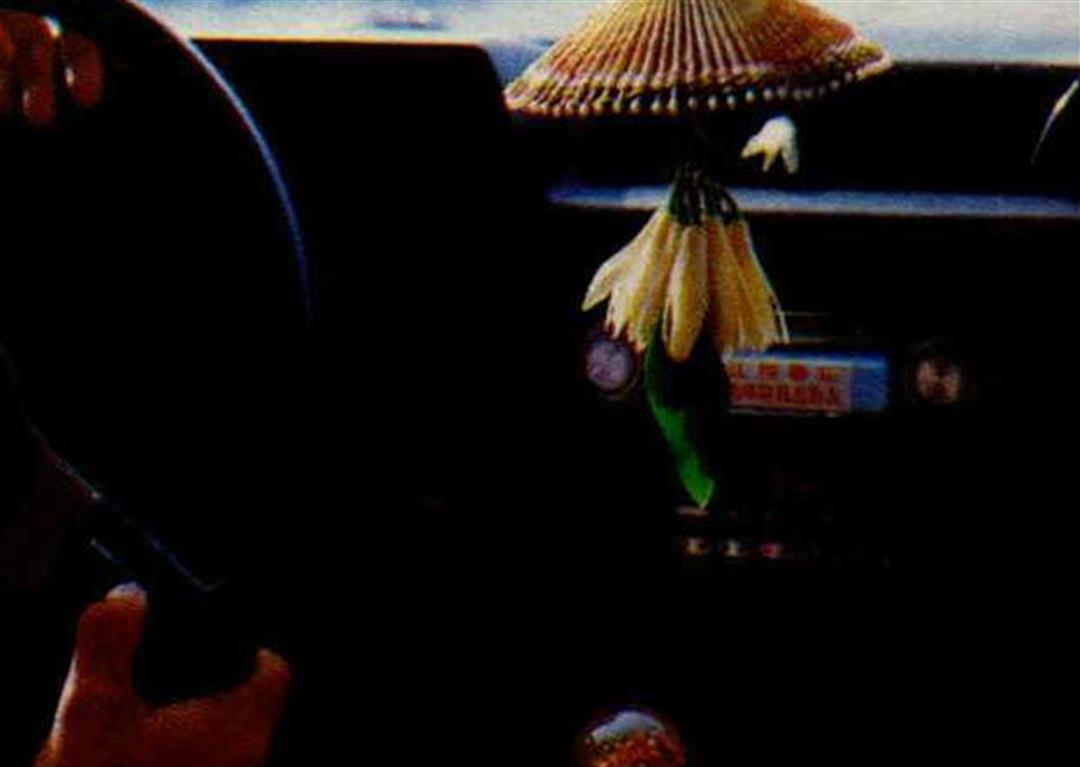
Taxi drivers have found magnolia blossoms to be one way to help beat the heat during the hot summers.

Women making an offering of flowers to the Buddha; according to older people, the faithful seek beauty, a good marriage, and fine children.
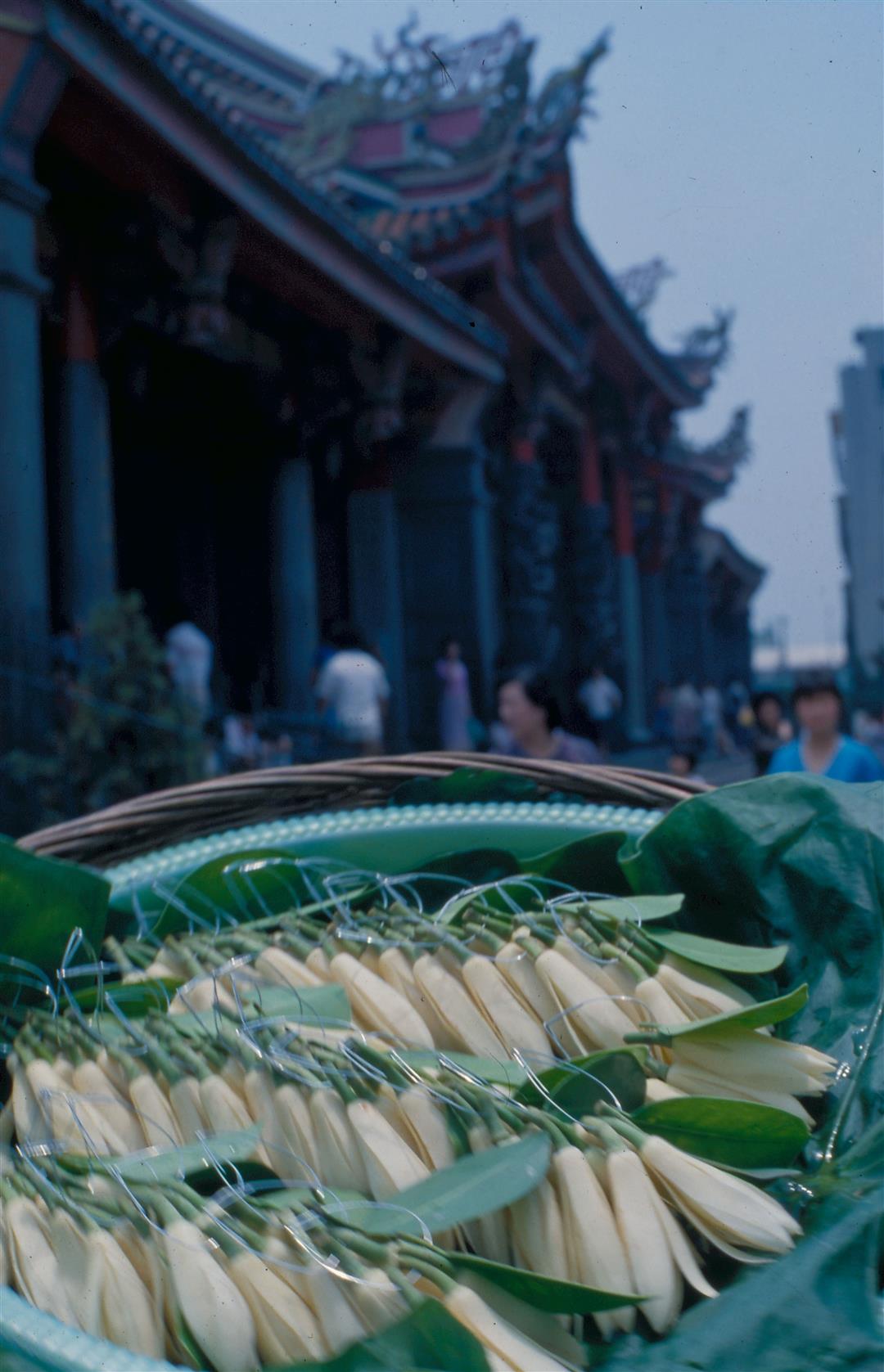
Traditionally Chinese women would put several clusters of magnolia blossoms in a dish on the altar, this was considered the most sincere and the purest offering.

A blossom in the hair of an old woman makes one think of the beauty of the past.

Children put magnolia blossoms in their pencil boxes and hang them from their school bags, the pure fragrance trails after them.
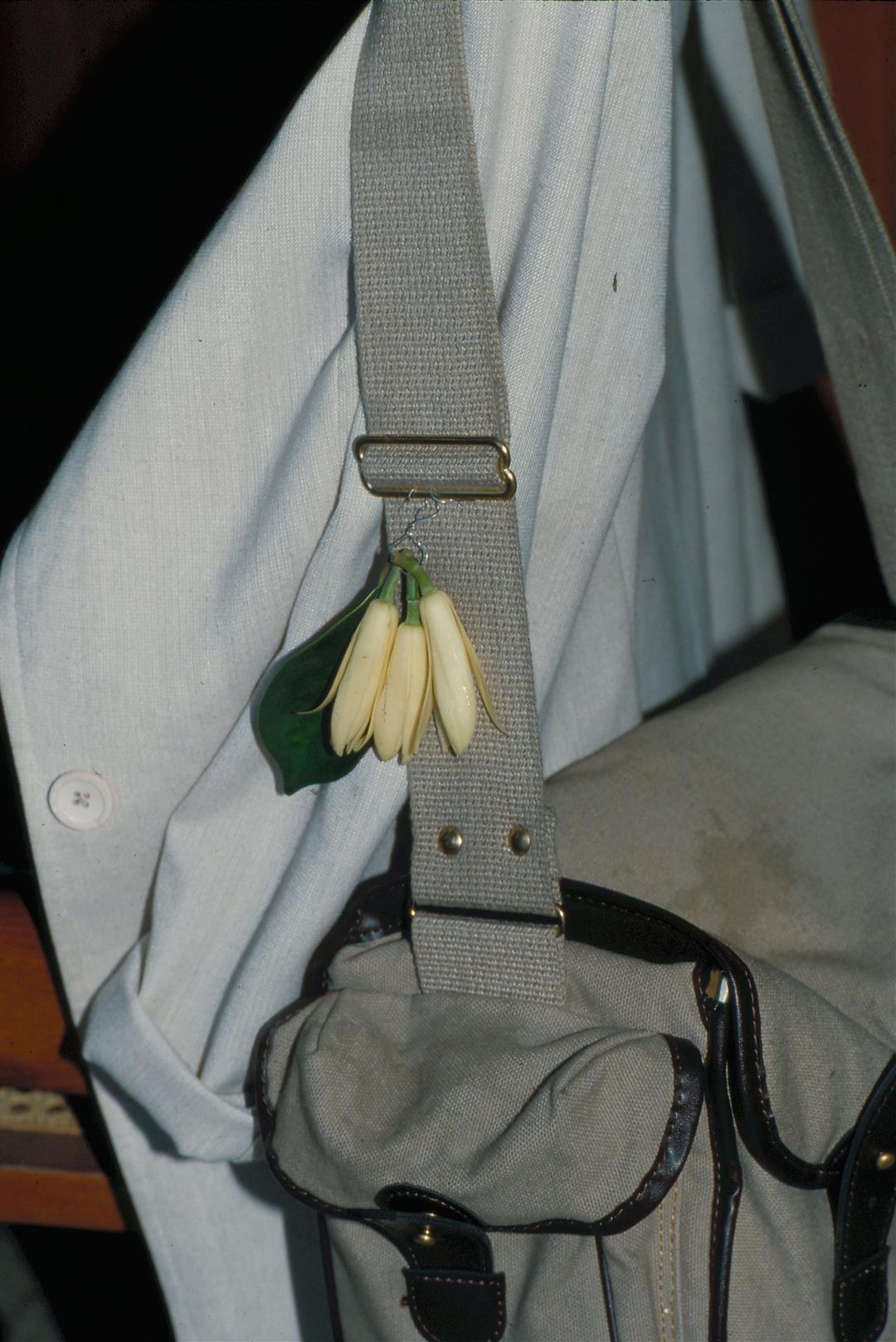
Children put magnolia blossoms in their pencil boxes and hang them from their school bags, the pure fragrance trails after them.